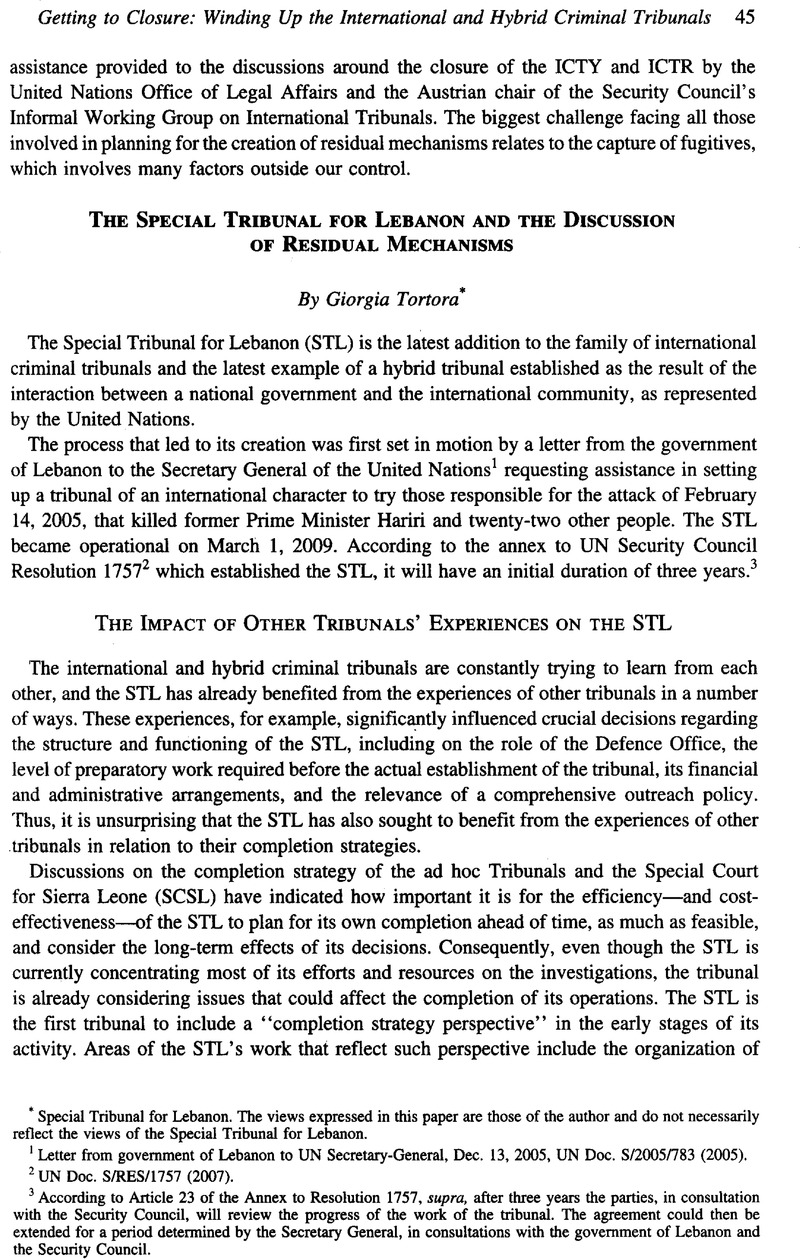Article contents
The Special Tribunal for Lebanon and the Discussion or Residual Mechanisms
Published online by Cambridge University Press: 28 February 2017
Abstract

- Type
- Getting to Closure: Winding Up the International and Hybrid Criminal Tribunals
- Information
- Copyright
- Copyright © American Society of International Law 2010
References
1 Letter from government of Lebanon to UN Secretary-General, Dec. 13, 2005, UN Doc. S/2005/783 (2005).
2 UN Doc. S/RES/1757 (2007).
3 According to Article 23 of the Annex to Resolution 1757, supra, after three years the parties, in consultation with the Security Council, will review the progress of the work of the tribunal. The agreement could then be extended for a period determined by the Secretary General, in consultations with the government of Lebanon and the Security Council.
4 The STL documents at the moment include not only STL-generated documents, but also documents from the International Independent Investigation Commission and the government of Lebanon.
5 For example, at the International Criminal Tribunal for the former Rwanda, individuals acquitted at the end of their trials have remained in the custody of the tribunal for a number of years before being released. In several cases, their return to Rwanda was impossible because it was feared they would face retaliation. At the same time, there was great difficulty in negotiating agreements for their relocation with third countries.
7 Id. at art. 9.4.
- 1
- Cited by


